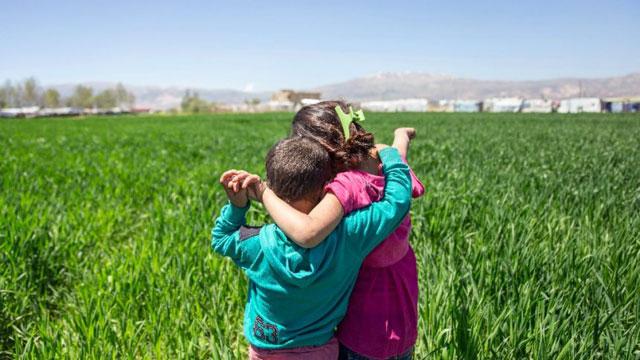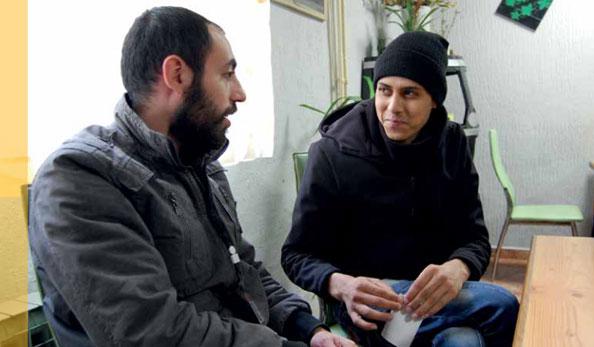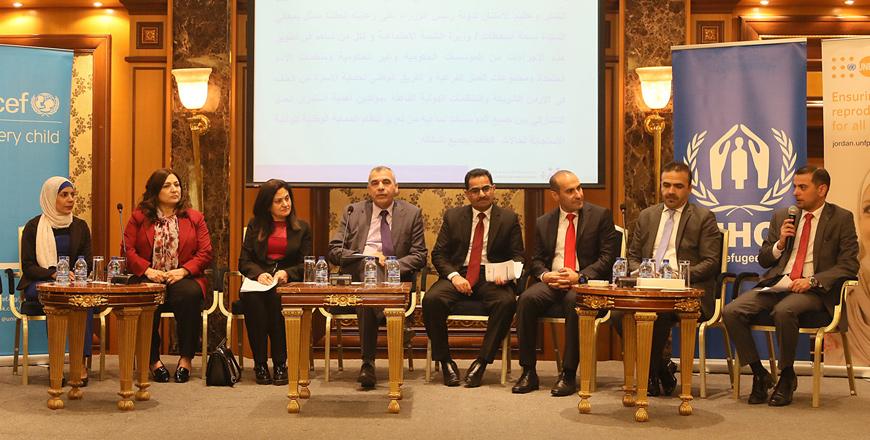You are here
‘Over 3,000 unaccompanied, separated children entered Jordan since 2012’
By Camille Dupire - Oct 19,2017 - Last updated at Oct 19,2017

Unaccompanied children are defined as minors moving, voluntarily or involuntarily, for a variety of reasons, who become separated from their parents or other caregivers (Photo courtesy of INTERSOS report)
AMMAN — Over 3,000 unaccompanied and separated children (UASC) have entered Jordan since 2012, according to a recent report by INTERSOS and MMP titled “On my own: Protection challenges for unaccompanied and separated children in Jordan, Lebanon and Greece”.
Defining UASC as “minors moving, voluntarily or involuntarily, for a variety of reasons, who become separated from their parents or other caregivers”, the report looked into the violations of those children’s rights, as set out in the 1989 Convention on the Rights of the Child.
According to the report, Jordan was selected as it is one of the countries where the strained institutional capacity, often coupled with poorly coordinated monitoring of data, has put the UASC most at risk of arrest, detention, relocation and even deportation.
For UNHCR Senior Protection Officer Douglas DiSalvo, this is a misreading of the situation. “From the beginning of the Syria crisis, the vast majority of unaccompanied and separated children have entered the country with the assistance and facilitation of the Jordanian authorities, and have benefited from the protection provided by governmental and UNHCR registration at the time of entry and during their stay in Jordan,” he told The Jordan Times over the phone.
“Between 2011 and 2015, humanitarian agencies have worked in close cooperation with governmental bodies to identify unaccompanied children as they entered the country to ensure they are provided with the emergency care and support they need,” he explained.
“Over 40 agencies, including the UN, the Jordanian government through the Family Protection department, the Ministry of Social Development, the armed forces, among others, and many Jordanian non-governmental organisations, have participated in an inter-agency child protection referral mechanism designed to ensure the protection needs of children at risk are met effectively in accordance with the best interests of the child,” the senior officer added.
While he stated that around 95 per cent of the registered children were successfully reunited with their family, extended family members or foster families over that period, he acknowledged that continuing challenges in the care and protection of UASC persist.
Numerous issues in the legal, social and economic fields face these unaccompanied children, including inconsistent or non-existent implementation of procedural safeguards, child labour, as well as state-level and public scepticism around security concerns related to UASC, the report showed.
Consequently, a number of these children avoid accessing humanitarian support, which further heightens their vulnerability as it prevents them from accessing education, healthcare, psychosocial support, shelter and legal representation, the report claimed.
However, several humanitarian experts have denied this claim in previous remarks, stressing that numerous services are provided across the Kingdom, whether through formal or informal channels.
For DiSalvo, the problems faced by UASCs are most often the result of developments in the children’s situations once they are in Jordan. “In some cases, children can become separated from their family, either by becoming orphan, or if their family leaves to another country, or is deported. Others are separated when children depart from camps without authorisation, or when they are apprehended for working illegally,” he explained.
“Caring for the children arrested for issues such as illegal labour, departure from camps, or minor offences is the challenge we are facing now, as those children are then often moved to the camp without their parents,” the senior officer continued.
As irregular migration is often driven by the need for security and the search for better livelihoods opportunities, refugees tend to settle in urban areas that offer more prospect for income and decent living conditions, the report showed, meaning that children in camps will be inclined to leave the camp without permission in spite of the legal and safety risks this move entails.
Referring to interviews with refugees and humanitarian actors, the report also pointed out the increased societal tensions caused by the protracted crisis. “At the beginning of the Syrian crisis, the large influx of refugees was met by demonstrations of solidarity, hospitality and tolerance on the part of Jordanians,” the report stated.
However, over time, male teenagers and young men in their early 20s have been increasingly perceived as security threats.
While it commended the “reassuring developments in child protection legislation” to better align Jordan’s frameworks with international standards, the report called for a stronger focus on UASC in the child protection system.
It urged for their inclusion in the decision making process regarding their “decision to move, service provision they receive and policy decisions that affect them” to avoid the shortcomings outlined in the report.
Related Articles
AMMAN — Single male refugees and unaccompanied adolescent boys are subject to a number of threats and risks which are often overlooked and u
AMMAN — Deputising for Prime Minister Omar Razzaz, Minister of Social Development Basma Ishaqat on Monday launched national procedures aimed
United Arab Shipping Company (UASC), a Mideast-based container shipping line and emerging global carrier, announced in a press statement on Sunday the establishment of a wholly UASC-operated agency in Jordan.
















